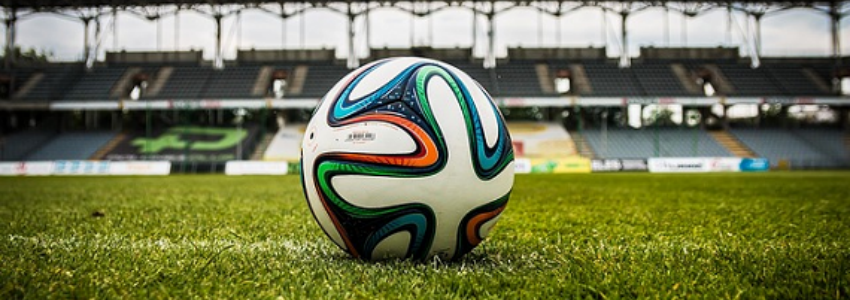How much is Raheem Sterling’s potential worth?
Raheem Sterling’s contractual dispute with Liverpool is apparently past stage of negotiations, and already at the stage of war. Sterling has been framed as ‘taking on’ the club, bringing to mind a boxing match rather than an ongoing conversation between two parties about his future employment.

In the red corner is Liverpool, one of England’s most successful and traditional clubs, with a recent reputation for playing hardball when it comes to contracts – take John W Henry’s admission that they essentially ignored terms of Luis Suarez’s contract when Arsenal put in a bid, for example. And in the maybe-not-a-red-for-much-longer corner is Raheem Sterling, a promising but raw 20-year-old already cast as the disloyal, greedy wantaway rebel.
The strawman arguments have come out already, often going unopposed. John Barnes, for example, questioned whether Sterling would really be the “first name on the teamsheet at Manchester City“. But no-one, let alone Sterling himself, has alleged this would possibly be the case. Plenty, though, have considered that City might want to invest in a young English attacker who has already demonstrated great ability in a variety of positions, someone who will probably improve further. He would get plenty of playing time.
Inevitably, public dislike of Sterling’s attitude has already shifted perceptions of Sterling as a footballer. It’s been somewhat peculiar to read so many opinions suggesting he’s, actually, not a particularly good footballer – on the back of two years where he’s exceeded expectations and demonstrated great on-pitch maturity for a player of his age.
Almost every on-pitch criticism of Sterling can be negated by the fact he’s only 20 years old. 20-year-olds are, put simply, not yet great footballers. They don’t have an end product, they’re not consistent, they might not have nailed down their best position. You get the odd exception, the occasional Leo Messi, but they’re few and far between.
By the age of 20, Sterling has played a significant part in a title challenge. There were other stars in that charge, of course, but Sterling contributed heavily: he played on the left, on the right, as a number ten, as wing-back. Wherever he was asked to play, he did so with discipline and energy.
The most remarkable thing was his tactical ability, something young wingers are generally criticised for. When England opened their World Cup campaign against Italy last summer, Sterling hadn’t merely sneaked his way into the starting XI, he’d earned his place as England’s number ten, responsible for both driving his side forward into attack through the middle, and for tracking Italy’s dangerman, Andrea Pirlo.
Besides, Sterling is improving. Initially he seemed to flit in and out of matches, then later he became more consistent. At first, his finishing was truly atrocious – he simply couldn’t generate enough power – then he gradually started to show a more clinical side. Of course there’s more work to do, but the point is that the improvement will continue.
It’s difficult to find many comparable cases in European football. Perhaps the closest is Memphis Depay, who impressed with the Netherlands at last summer’s World Cup, and has continued his great form into this season with PSV. Ominously, for Liverpool, Manchester United were willing to pay £25m for him, despite the fact they’re reasonably well-stocked in his position anyway. The transfer fee, and the player’s wages, are driven by supply and demand. For players in this mould, there isn’t a big supply, and there’s a huge demand.
Ultimately, we don’t yet know how good Sterling will become. It’s entirely dependant upon his attitude: there’s a chance he could progress further and become a genuine superstar, but there’s also a distinct possibility he’ll stagnate and regress.
The key thing to remember, though, is that when football clubs are looking at 20-year-olds, they’re looking for the potential, and they will pay for that potential. Liverpool know this as well as anyone – it’s why they paid £20m for Lazar Markovic, a promising footballer who had looked best as a supersub in the Portuguese league. It’s why they paid £35m for Andy Carroll on the back of, essentially, half a good Premier League season. It’s why they paid £16m for Mario Balotelli, because he’s capable of brilliant moments as well as moments of staggering stupidity. Potential.
It seems ludicrous, then, that they would underestimate Sterling’s potential. Maybe they can’t afford to go much higher, but the £100,000-a-week deal Sterling turned down earlier this year doesn’t sound so great when James Milner, a player Sterling keeps out of the England side, is supposedly being offered £165,000 by City. The harsh reality of the situation, sadly, might be that Sterling’s agent understands his true value better than Liverpool.
Tweet this:
What do you think? Is Raheem Sterling the next big thing? How can you put a value on potential? Help spread the word of his latest post by tweeting it to your followers…
[tweet_box]How much is Raheem Sterling’s potential worth? by Michael Cox #sterling #liverpool [/tweet_box]
Posted in , Premier League, Zonal Marking | 1 comment
May 21st, 2015 by Michael Cox

